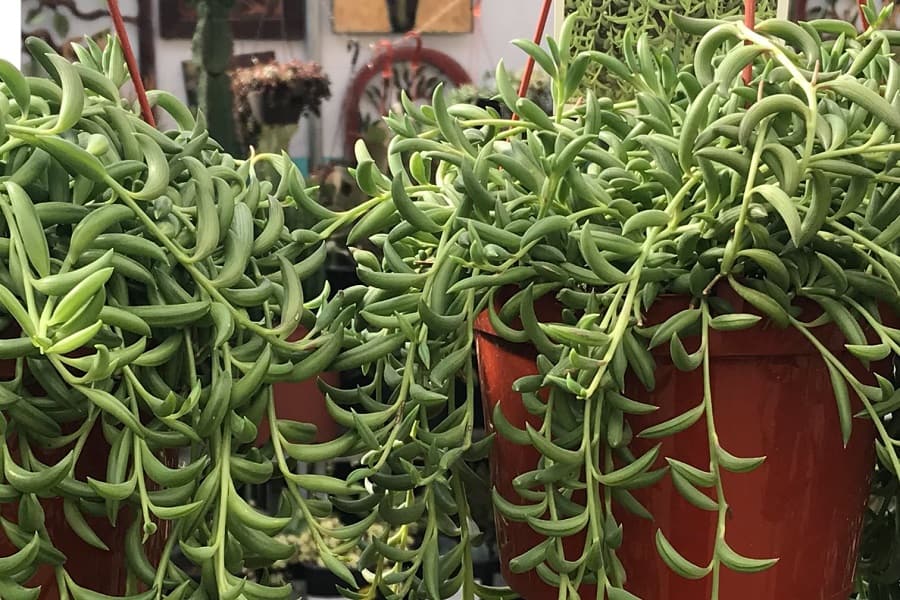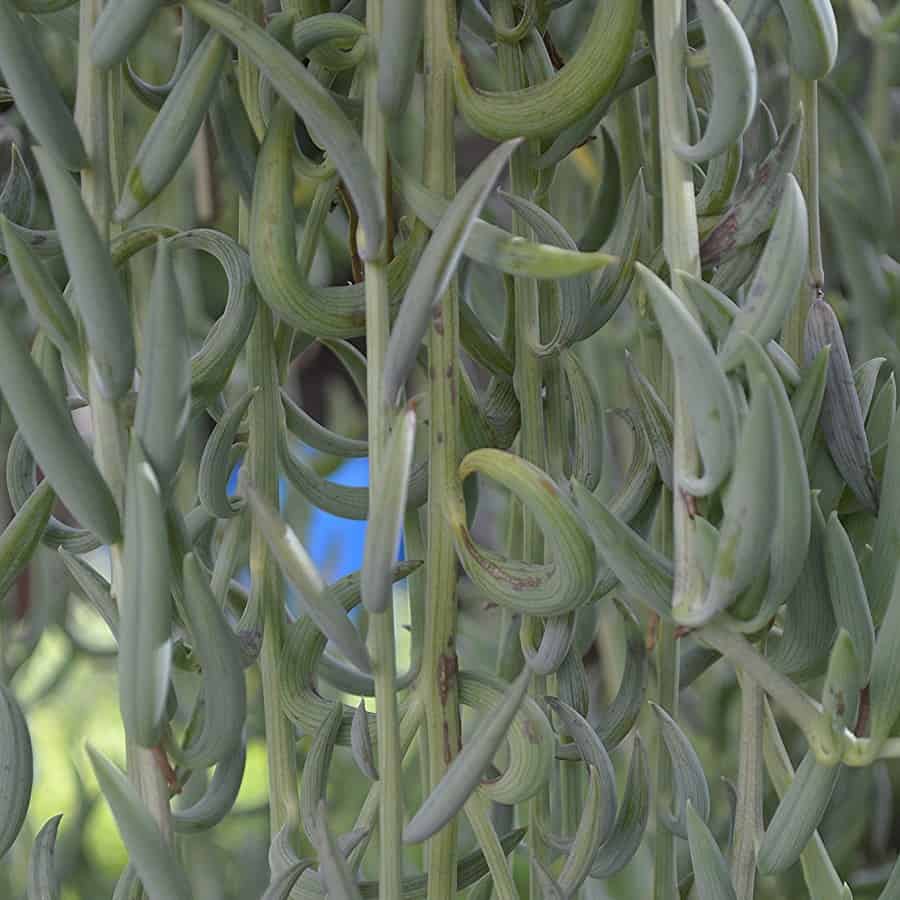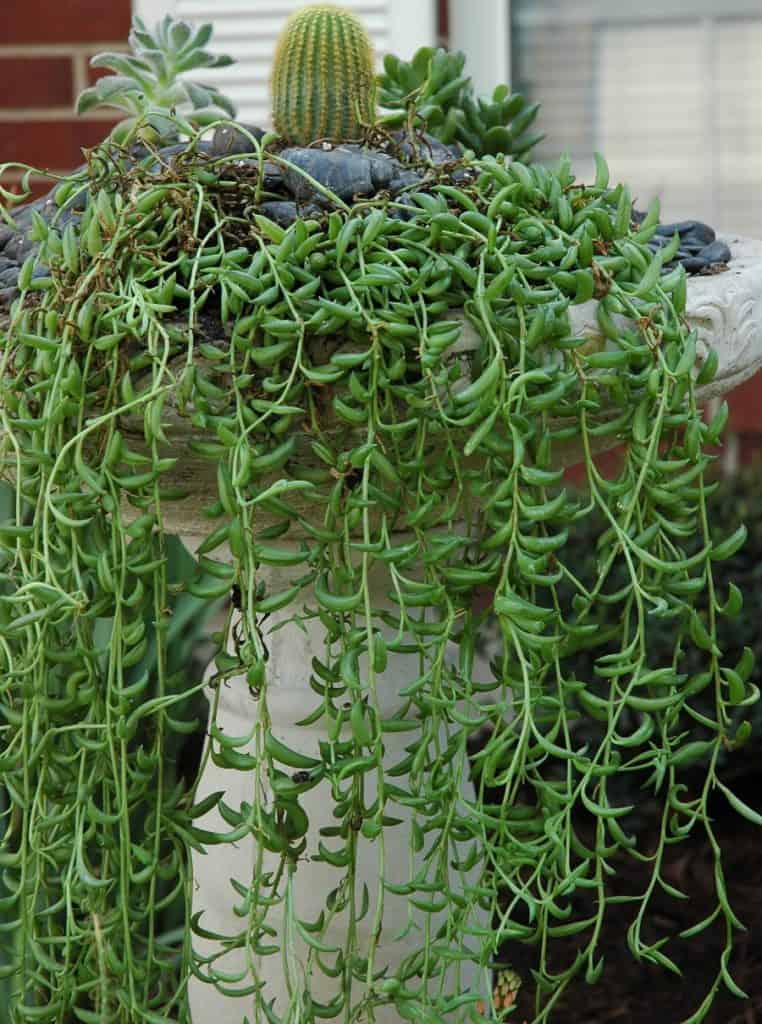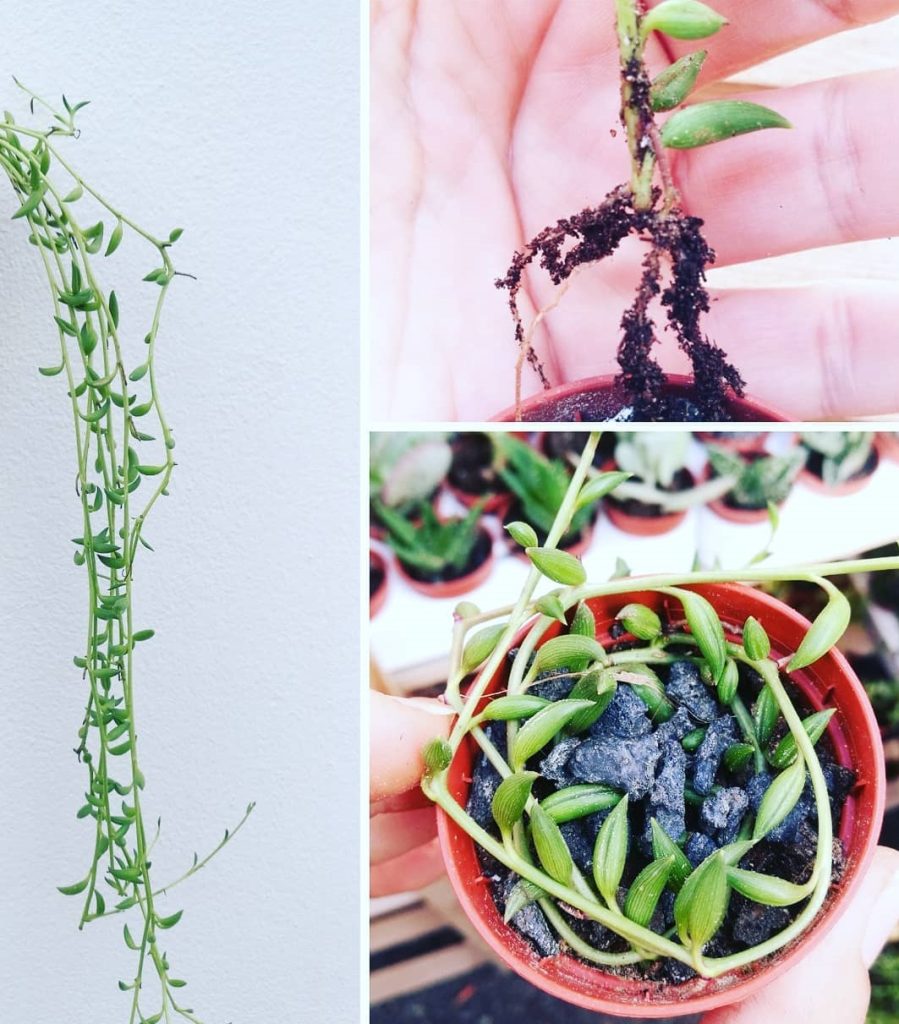Senecio Fish Hook: Characteristics and Care
Have you ever heard of the Senecio Fish Hook? It’s a succulent plant that loves to grow as a vine. Picture this: thin, narrow stems adorned with cylindrical leaves that curl outward at the ends, resembling fish hooks. Cool, right? And guess what? The whole plant is a beautiful blue-green color!
But wait, there’s more! This amazing plant also blooms small flowers, although they’re quite hard to spot unless you take a close look. Talk about a hidden treasure!
In this blog, we’ll explore the fascinating world of the Senecio Fish Hook succulent. We’ll discover its unique features, learn how to care for it, and maybe even uncover some secrets about its origin. So, stick around and get ready to dive into the enchanting world of this marvelous succulent!

Related Post:
24 Senecio Lower Classifications [With Pictures]
Contents
Caring for Senecio Fish Hook Succulents
Senecio Fish Hook succulents are unique and resilient plants. They are often used for ground cover, but some can grow into large shrubs. Before getting one, it’s important to know the specifics of the type you’re getting.
Now, let’s dive into the care instructions.
Light
Senecio Fish Hook succulents prefer bright sunlight, but they can tolerate indirect light too. If you live in a hot climate, make sure they still get bright sunlight. In cooler regions, they need full sunlight, even during winter. Remember, these plants don’t like hot or cold drafts.
Watering
Watering is especially important for Senecio Fish Hook plants. As succulents, they have the amazing ability to store water in their leaves, which helps them survive drought. It’s crucial not to overwater them, as their leaves can burst if the soil becomes too moist. To avoid this, allow the roots to completely dry out before watering again. Watering them too soon can cause root rot, resulting in mushy roots and an unhealthy plant.
During the growing season, water these plants once a week or every two weeks. In winter, reduce watering to once a month. Look for visual cues like wrinkling or soft leaves to determine when they need water. Make sure the soil is hydrated but not soaked. Remember, overwatered and underwatered succulents can look similar, so touch the leaves to check their condition.

Soil
The pH of the soil isn’t crucial for Senecio Fish Hook plants. They are easy to maintain, but the soil should be well-drained and sandy. For potted plants, a cactus mix or fast-draining succulent mix will work just fine.
Fertilizing
While these plants can thrive in sandy soil, they benefit from mild fertilization. Apply a gentle fertilizer between spring and fall. Be cautious not to overdo it, as excessive fertilization can cause leggy growth.
Climate
Most Senecio Fish Hook succulents grow well in USDA hardiness zones 9 to 12. They can handle heat, but they are sensitive to cold weather and dampness. Avoid prolonged exposure to cold temperatures, as it can lead to mushy plants. In winter, bring potted plants indoors to protect them.
Pests and Diseases
Senecio Fish Hook plants can be prone to mealybugs and scales. Keep insecticidal soap or neem oil on hand to treat any infestations that may occur.
Pruning
Pruning is usually unnecessary for Senecio Fish Hook plants unless you need to remove diseased or dead foliage. If you have a taller species, you can prune them down to the stem for a more compact appearance.

Potting and Repotting
Smaller Senecio Fish Hook succulents thrive in containers alongside other plants. Use a well-draining potting mix and ensure the pot has drainage holes. Unglazed ceramic or terra cotta pots are preferable.
Repotting depends on the species and growth patterns. It’s time to repot when the plant’s roots start to outgrow the pot and emerge from the drainage holes. This usually occurs every 12 to 18 months. Repotting also offers a chance to upgrade to a larger pot and improve the soil for better growth.
Propagating Senecio Fish Hook Succulents
Here’s a step-by-step guide on propagating Senecio Fish Hook plants:
- Obtain a healthy Senecio Fish Hook plant:
- You can either use root cuttings or seeds for propagation.
- Root cuttings are more efficient and commonly used.
- If using root cuttings, make sure they are healthy and free from any diseases.
- Choose the right time:
- The ideal time for propagation is during the growing season, which spans from autumn to spring.
- This period provides the best conditions for successful root development.
- Prepare the cuttings:
- Take root cuttings from the parent plant.
- Ensure the cuttings are of an appropriate size for your specific species.
- Let the cuttings callous or dry out for a few days. This helps prevent rotting and promotes healthy root growth.
- Apply rooting hormone (optional):
- If desired, you can dip the cut ends of the root cuttings into a rooting hormone.
- The rooting hormone stimulates root growth and increases the chances of successful propagation.
- Prepare a container:
- Choose a container that has drainage holes to prevent waterlogging.
- Use a potting mix suitable for succulents or a cactus mix.
- Fill the container with the potting mix, leaving some space at the top for planting the cuttings.

- Plant the cuttings:
- Make a small hole in the potting mix using your finger or a pencil.
- Insert the root cuttings into the holes, making sure they are positioned upright.
- Gently press the potting mix around the cuttings to secure them in place.
- Water sparingly:
- After planting the cuttings, water the container lightly.
- Do not overwater, as excessive moisture can lead to rotting.
- Wait until you see signs of root growth before watering again.
- Provide the right environment:
- Place the container in a location where it will receive bright, indirect light.
- Maintain a moderate temperature and avoid exposing the cuttings to extreme cold or hot drafts.
- Monitor and care for the cuttings:
- Regularly check the moisture level of the potting mix.
- Ensure the soil is hydrated but not waterlogged.
- Keep an eye out for any signs of pests or diseases and treat them promptly if necessary.
- Patience and growth:
- It may take several weeks or even months for the root cuttings to develop into new plants.
- During this time, be patient and provide consistent care.
By following these steps, you can successfully propagate your Senecio Fish Hook plants and enjoy expanding your collection!
